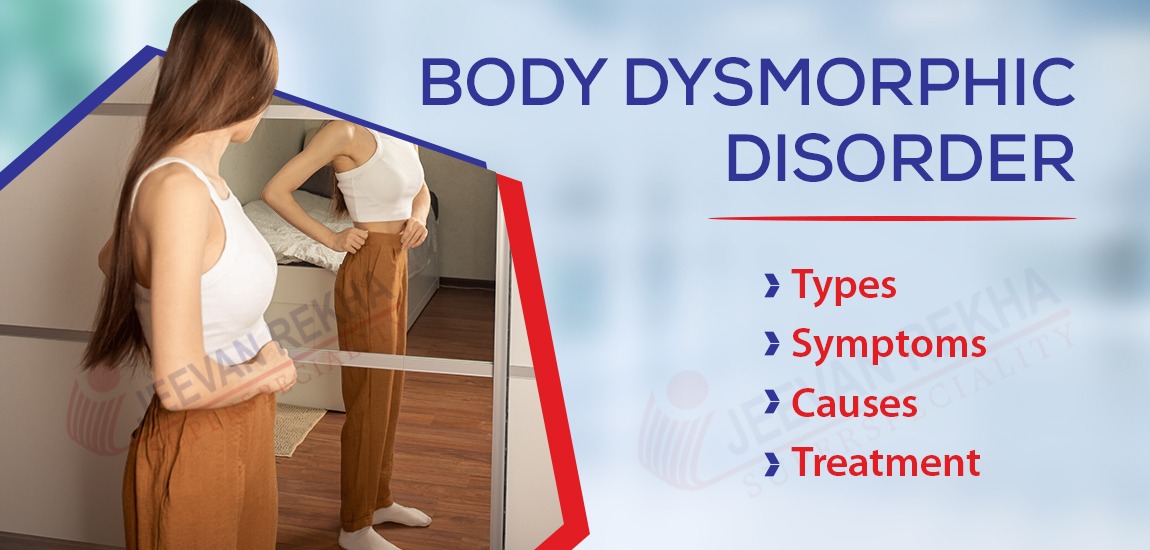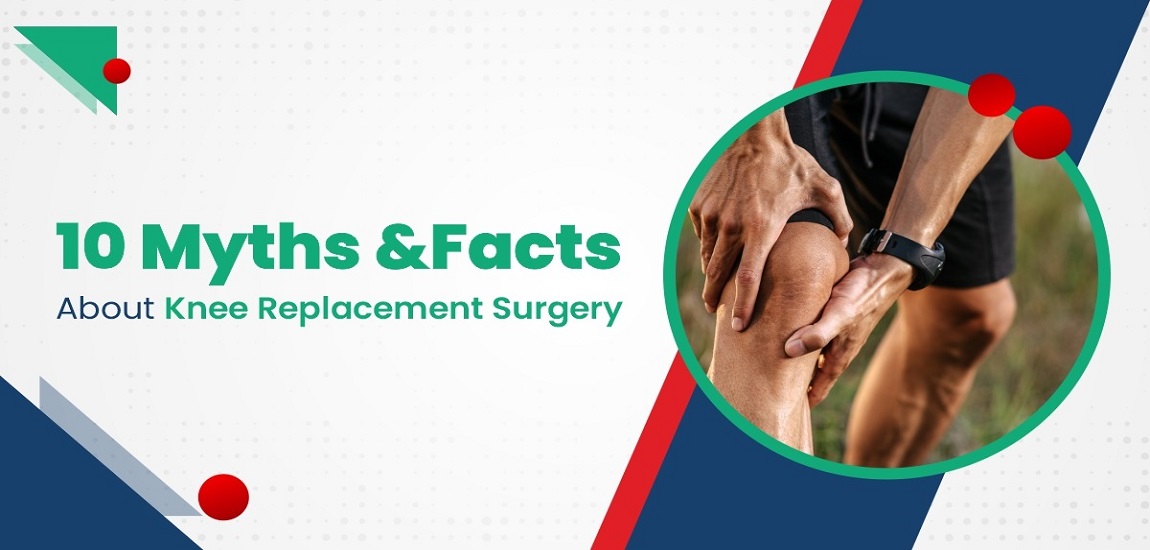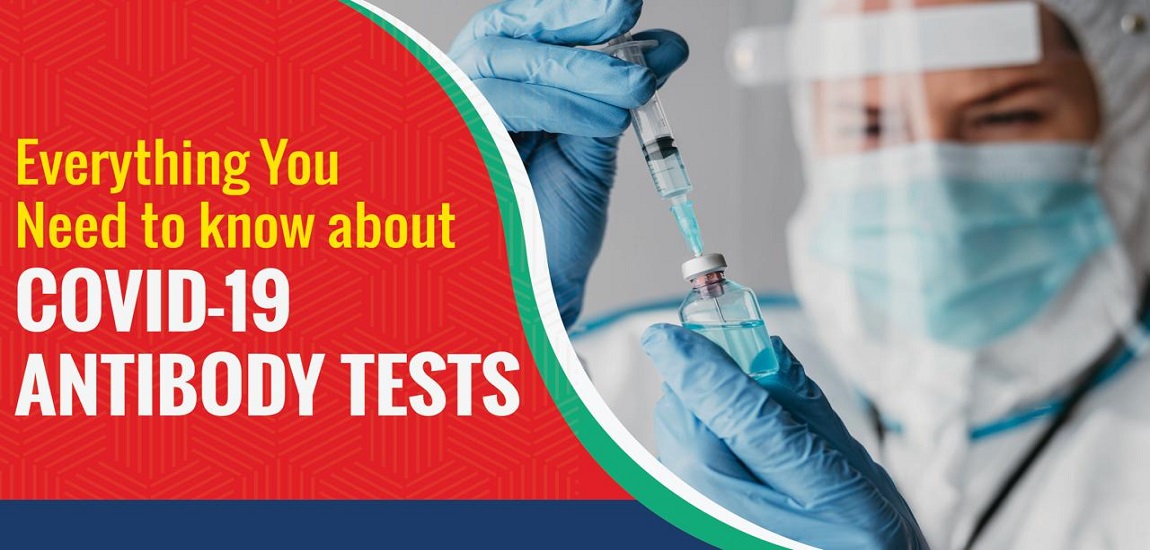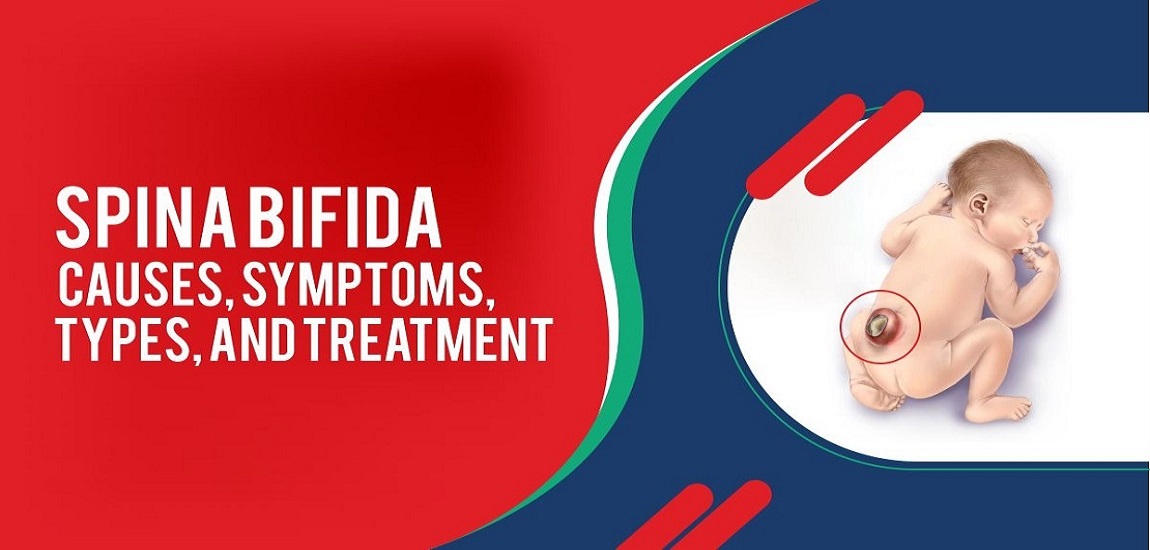
- By JRSH Admin
- In Health and Tips,
- Posted December 26, 2023
Body Dysmorphic Disorder: Types, Symptoms, Causes and Treatment
A mental health illness called body dysmorphic disorder alters your perceptions and emotions regarding your physical attributes. People frequently have negative thoughts and feelings about their appearance, which can seriously disrupt their lives and jeopardize their physical and mental health.
What is Body Dysmorphic Disorder?
One mental health issue is body dysmorphic disorder (BDD). You might find it difficult to lead a normal life if you have BDD because of your extreme dissatisfaction with the way your body looks. Many of us perceive imperfections in our appearance. But if you have borderline personality disorder (BDD), you might react to this "flaw" in an excessive way.
You might discover that it is difficult to stop thinking badly about your body. You might even worry about your appearance for hours every day. Your thoughts can become so negative that you may occasionally think about ending your life. If you're struggling with such thoughts, seeking help from the best hospital in Jaipur can provide professional support and care to address these challenges.
Types of Body Dysmorphic Disorder:
Body Dysmorphic Disorder (BDD) is a mental health condition characterized by obsessive preoccupation with perceived flaws or defects in physical appearance, which may be minor or nonexistent. There are different types of BDD based on the specific focus of the perceived flaws. Here are some common types:
- Skin-related BDD: Preoccupation with skin imperfections, such as acne, scars, wrinkles, or coloration.
- Hair-related BDD: Excessive concern about the appearance of hair, including its thickness, style, or perceived hair loss.
- Nose-related BDD: Obsessive focus on the size or shape of the nose.
- Muscle Dysmorphia (also known as "Bigorexia"): A subtype of BDD where individuals are preoccupied with the idea that their body is insufficiently muscular or lean.
- Facial features BDD: Excessive worry about specific facial features, such as eyes, ears, lips, or jawline.
- Breast-related BDD: Excessive concern about the size, shape, or symmetry of the breasts.
- Genital-related BDD: Preoccupation with perceived defects or inadequacies in the genital area.
You can Read Also: Implantation Bleeding Vs Periods: Know the Difference
Symptoms of Body Dysmorphic Disorder:
Body Dysmorphic Disorder (BDD) is characterized by a preoccupation with perceived flaws or defects in physical appearance, which may be minor or nonexistent. Individuals with BDD often engage in repetitive behaviors or mental acts in response to their concerns. The symptoms of BDD can vary in severity, but common signs include:
- Preoccupation with Appearance: Excessive focus on one or more perceived flaws in physical appearance that others may not notice or see as minor.
- Repetitive Behaviors: Engaging in repetitive behaviors or mental acts, such as checking mirrors, grooming, seeking reassurance, comparing oneself to others, or camouflaging (using makeup, clothing, or other means to hide the perceived flaw).
- Avoidance: Avoid social situations, work, or other activities due to concerns about one's appearance or the fear of being judged negatively.
- Excessive Self-Consciousness: Feeling extremely self-conscious and distressed about one's appearance, often leading to significant emotional distress and impairment in daily functioning.
- Seeking Reassurance: Frequently seeking reassurance from others about one's appearance, but this reassurance provides only temporary relief.
- Impact on Daily Functioning: Significant impairment in social, occupational, or other important areas of functioning due to the preoccupation with perceived flaws.
- Time-Consuming Rituals: Spending a significant amount of time daily engaged in rituals related to appearance concerns can interfere with daily activities and responsibilities.
- Negative Emotional Impact: Experiencing intense anxiety, shame, or depression related to perceived flaws, which may persist even if others do not see the same flaws.
Causes of Body Dysmorphic Disorder
The exact causes of Body Dysmorphic Disorder (BDD) are not fully understood, but a combination of genetic, neurobiological, psychological, and environmental factors may contribute to its development. In short, the causes of BDD can be summarized as follows:
- Genetic Factors: There may be a genetic predisposition to BDD, as individuals with a family history of anxiety or obsessive-compulsive disorders may be more susceptible.
- Neurobiological Factors: Differences in brain structure and function, particularly in areas related to perception and emotional processing, may play a role in the development of BDD.
- Psychological Factors: Negative body image, low self-esteem, and perfectionism are psychological factors that can contribute to the development and maintenance of BDD.
- Environmental Factors: Societal and cultural influences, such as societal pressure to meet certain beauty standards or experiences of trauma or bullying related to appearance, can contribute to the development of BDD.
- Neurotransmitter Imbalances: Imbalances in neurotransmitters, such as serotonin, may contribute to the symptoms of BDD. This is supported by the effectiveness of serotonin reuptake inhibitors (SSRIs) in treating BDD.
- Personality Traits: Certain personality traits, such as high levels of anxiety or sensitivity to criticism, may be associated with an increased risk of developing BDD.
You can Read Also: 5 Tips for a Happy and Healthy Summer
Diagnosis of Body Dysmorphic Disorder
The diagnosis of Body Dysmorphic Disorder (BDD) is typically made by mental health professionals, such as psychologists or psychiatrists. The process involves a comprehensive assessment that includes the following components:
- Clinical Interview: A thorough clinical interview is conducted to gather information about the individual's symptoms, medical history, psychiatric history, and overall functioning. The clinician will ask about the specific concerns related to appearance and the impact of these concerns on the person's daily life.
- Diagnostic Criteria: The clinician will refer to the criteria outlined in the Diagnostic and Statistical Manual of Mental Disorders (DSM-5), which is a widely used manual for the classification of mental health disorders. BDD has specific criteria that must be met for a formal diagnosis.
- Observation and Assessment: The clinician may observe the individual's behavior, appearance-related rituals, and emotional responses. They may also use standardized assessment tools to measure the severity of BDD symptoms.
- Differential Diagnosis: BDD may share similarities with other mental health conditions, such as obsessive-compulsive disorder (OCD), social anxiety disorder, or eating disorders. A careful evaluation helps rule out other potential diagnoses and determine whether BDD is the primary concern.
- Collateral Information: Information from family members, friends, or other sources may be gathered to provide a broader perspective on the individual's symptoms and functioning.
- Duration and Severity: The symptoms of BDD must be persistent and cause significant distress or impairment in social, occupational, or other important areas of functioning to meet the diagnostic criteria.
Prevention of Body Dysmorphic Disorder
While it may not be possible to prevent Body Dysmorphic Disorder (BDD) entirely, certain strategies can contribute to reducing the risk or mitigating its impact:
- Promote Positive Body Image: Encourage a healthy and positive body image by fostering self-acceptance and emphasizing the diversity of natural appearances.
- Address Societal Pressures: Challenge unrealistic beauty standards and societal pressures related to appearance, promoting a more inclusive and accepting culture.
- Early Intervention: Identify and address signs of negative body image or obsessive behaviors early on, especially in individuals at higher risk due to family history or other factors.
- Promote Mental Health Awareness: Increase awareness of mental health issues, including BDD, to reduce stigma and encourage early intervention and support.
- Healthy Coping Strategies: Encourage the development of healthy coping mechanisms for stress, anxiety, or negative emotions that don't involve excessive focus on appearance.
Treatment of Body Dysmorphic Disorder
Treatment of Body Dysmorphic Disorder (BDD) typically involves a combination of psychotherapy and, in some cases, medication. In short:
- Psychotherapy (Cognitive-Behavioral Therapy - CBT): CBT tailored for BDD is the primary psychotherapeutic approach. It focuses on identifying and challenging distorted thoughts about appearance, reducing avoidance behaviors, and developing healthier coping strategies.
- Medication: Selective serotonin reuptake inhibitors (SSRIs), such as fluoxetine or fluvoxamine, are commonly prescribed to help alleviate symptoms of BDD. They may be used in conjunction with psychotherapy.
- Support Groups: Participating in support groups with individuals who have experienced similar struggles can provide a sense of understanding and shared coping strategies.
- Family Involvement: In some cases, involving family members in therapy can be beneficial, fostering understanding and support.
- Mindfulness and Relaxation Techniques: Techniques such as mindfulness meditation and relaxation exercises may be incorporated to manage anxiety and stress.
- Education and Psychoeducation: Providing education about BDD, its nature, and the treatment process helps individuals and their families understand the disorder and engage more effectively in the therapeutic process.
Tags
Blog Search
Latest Posts
-
बर्ड फ्लू के लक्षण, कारण, उपचार और बचाव के उपाय जानें
December 04, 2025 -
Best Diet Plan for Menopause Weight Management
November 25, 2025 -
Pulmonary Fibrosis Treatment: Understanding Lung Scarring and Breathing Problems
November 21, 2025 -
Arrhythmia: Types, Causes, Symptoms, and Treatment
November 07, 2025 -
Silent Heart Attack: Causes, Symptoms and Treatment
October 24, 2025




